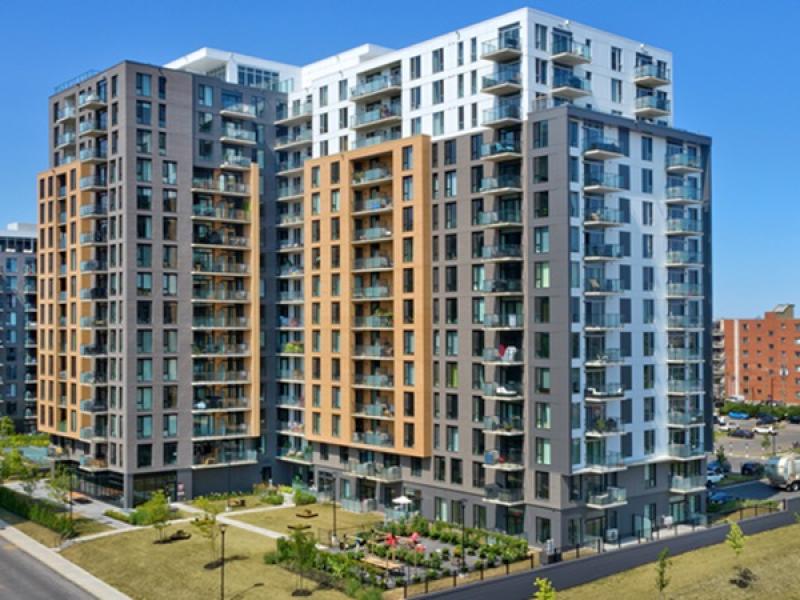
Bill Argeropoulos, Avison Young’s principal and practice leader for research in Canada. Avison Young’s 2019 North America, Europe and Asia Commercial Real Estate Forecast has just been released. (Image courtesy AY)
Canada’s office, industrial and retail commercial real estate investment markets compare favourably to major international markets, according to Avison Young’s 2019 North America, Europe and Asia Commercial Real Estate Forecast.
The report examines 68 cities and regions and concludes that, despite some economic and political uncertainty, Canada’s 10-year “bull run” will continue. It forecasts that investment levels should hold steady, which is a good sign considering both 2017 and 2018 have produced historically high levels of activity.
Bill Argeropoulos, Avison Young’s principal and practice leader for research in Canada, told RENX the major CRE sectors remain strong, with office leading the way.
Canada’s office market
“In the North American context, Canadian markets captured five of the continent’s 10 lowest vacancy rates,” said Argeropoulos. “Compared to other global cities covered by Avison Young, Toronto’s vacancy is similar to London — a market nearly double its size.”
Office vacancies declined in almost every Canadian city outside of Alberta, lowering the Canadian average to 11 per cent near the end of 2018. Competition for space remains strong.
A similar story is expected in 2019, although vacancies are expected to rise modestly to 11.3 per cent by year-end because construction nearly doubled to more than 22 million square feet in 2018. About half of that was in Toronto; another 25 per cent or so was in Vancouver.
Argeropoulos said the co-working trend, which has become prevalent in some global markets, hasn’t yet advanced to the same extent in Canada.
“Canada’s relatively smaller scale compared to the U.S. and the U.K., and a limited group of institutional owners of top-tier assets — especially in urban centres — may act as a barrier to the growth of the co-working phenomenon.”
Most of Canada’s office product is concentrated in Toronto, Vancouver and Montreal. Argeropoulos also pointed out that all of Canada has roughly the same total office inventory as Manhattan.
“Downtown office product is largely controlled by a handful of pension funds and publicly traded REITs, with the same owners appearing in markets across the country,” said Argeropoulos. “Ownership of suburban assets is more diverse, however.”
Tight conditions and upward pressure on rents in some downtown markets with little or no near-term supply relief on the horizon could benefit properties in suburban markets, particularly those offering rapid transit connectivity and other urban amenities, in the next couple of years.
Canada’s industrial market
Canada’s industrial market outperformed most expectations in 2018 and is set to do so again this year as demand continues to outpace new supply and drive rents higher. A lack of available industrial land, particularly in Vancouver and Toronto, is driving up prices.
“The industrial market has much more fragmented ownership compared to the institutionally controlled office market, with a significant component of ownership by users,” said Argeropoulos. “In fact, unlike the office sector, user purchases of industrial assets have been increasingly prevalent in recent years thanks to the affordability of debt.”
Overall vacancy fell to a record low of 2.9 per cent near the end of 2018, about half of the rate in the U.S. It’s expected to edge even lower in 2019. Toronto (1.3 per cent) and Vancouver (1.5 per cent) posted North America’s lowest vacancy rates in 2018 and are projected to rank among the three tightest markets again this year.
The amount of industrial space under construction rose to more than 20 million square feet late in 2018, up from almost 14 million square feet at the end of 2017.
Bolstered by e-commerce, large-format distribution and fulfillment centre space is expected to remain a catalyst for growth, along with the emerging recreational cannabis industry.
“One trend that is largely absent in Canada so far, but which we have seen in some U.S. markets and London in the U.K., is the construction of purpose-built or speculative multi-storey warehouse product — a scheme firmly aimed at the last-mile logistics market,” said Argeropoulos.
Canada’s retail market
Retail remains the most unpredictable commercial real estate sector in Canada. Vacancies remain in flux as a lingering result of the failures of several prominent chains, while some big-box chains closed underperforming locations amid the ongoing e-commerce revolution.
“There seems to be a balance between investment in urban and suburban retail assets and, despite challenges, we have not seen a hollowing out of shopping centres such as has been seen in many places across the U.S.,” said Argeropoulos.
Divergence in the retail spectrum has become more apparent as discount and luxury retailers flourish at the expense of those in the mid-market category. Growth in consumer spending is slowing under pressure from high consumer debt levels and rising interest rates.
“Despite ongoing store closures, rising consumer debt levels and competition from e-commerce, we are under-retailed relative to our population size, and Canada is also a popular destination for international brands looking to establish a foothold,” said Argeropoulos. “Canadians still have more loyalty to brick-and-mortar retail, as the growth of online shopping has so far lagged behind markets such as the U.S. and U.K., but Canada will likely catch up.”
The focus on creating memorable consumer experiences is expected to become more acute, with food halls, fitness- and wellness-oriented services gaining prominence. Pop-ups continue to be popular and are sometimes leading to more permanent establishments.
Retail landlords continued making investments to upgrade assets to their maximum potential. Owners are also redeveloping properties with excess land or densification zonings to add complementary mixed-use elements.
Commercial real estate investment
Despite rising interest rates, demand outpacing available supply, and the length of the investment cycle, relatively sound leasing fundamentals in almost every market have kept investors enthusiastic about Canada’s commercial property market. Though all the numbers aren’t yet in, investment is expected to exceed the previous high of $36 billion set in 2017.
“Like elsewhere in the world, investors are seeking yield and commercial real estate has stable long-term returns compared with other investments,” said Argeropoulos. “Canada is viewed favourably because of its relatively sound underlying property market fundamentals, and political and economic landscape.”
Capital is abundant and, in search of higher yields, investors favour landlord-friendly markets and sectors offering significant rental rate growth.
Debt reduction and asset and geographic diversification are expected to continue in 2019, while asset values are expected to remain elevated and capitalization rates low for prime properties.
“A high concentration of core assets is controlled by a handful of institutional funds, which are less likely to part with their properties, limiting the availability of product for both domestic and foreign investment,” said Argeropoulos.
“Toronto and Vancouver are garnering the same investor interest as other major gateway cities around the world. The only Achilles heel is that core institutional-grade product available to purchase is very limited and cap rates are historically low.”
Despite the record-high prices, some potential vendors are holding assets because no desirable capital-deployment alternatives are present. Meanwhile, some potential buyers that find prices exorbitant are concentrating on improving or redeveloping existing assets to boost returns.
Argeropoulos said technology is changing users’ expectations of landlords and requirements for space performance, including data integrity and privacy, workplace sustainability, and configurational flexibility.
“Indoor air and light quality improvements, which have been monitored in Europe for years, are gaining momentum in North America as technology facilitates easy collection of data. In essence, buildings are getting smarter and both owners and occupiers will benefit.”







